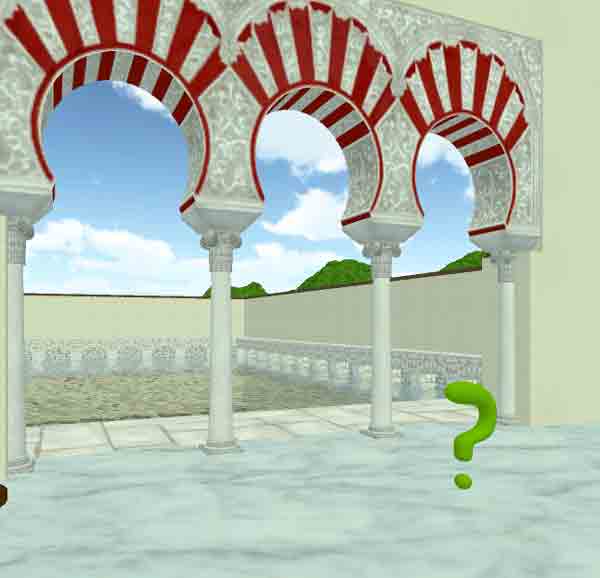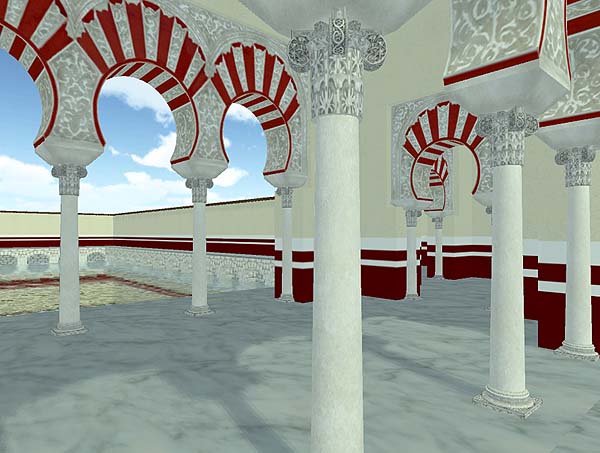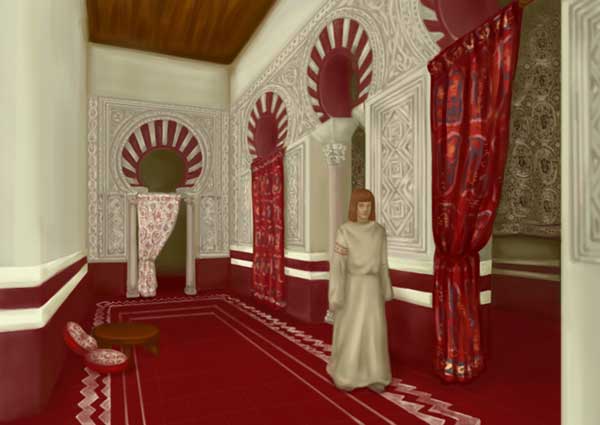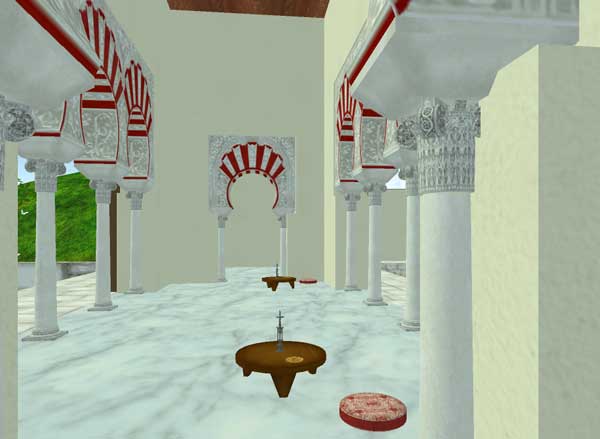Our 3D navigable model is accessible through a web browser here. We hope you will enjoy exploring its spaces! Those interested in the Unity build can view the files on Github here.
Our 3D navigable model was not intended to be a reconstruction in a strict archaeological sense. Rather, it was a creative visualization based on scholarship and archaeological evidence from al-Rummaniyya (ca. 965) and other Córdoban sites of the same time period, notably the nearby royal city of Madinat al-Zahra’ (ca. 936-1031) .
Visualizing architecture, objects, and landscape

In the 2010-12 phase, we experimented with a game format, intended to allow for alternative visualizations based on archaeological evidence. The user would “win” the ability to change aspects of the interior, and to introduce objects into the model, by correctly answering a series of quiz questions about the history and art of al-Andalus.

Allowing the user to change aspects of the interior materials and decoration offered a creative approach to the uncertainties of the archaeological record. Digital reconstructions of representative objects offered a new way to visualize the interplay between architecture, art and material culture. Ultimately we turned our focus from the game experience to one that emphasized the use of the model to evoke the material spatiality of a 10th century Cordoban munya.

